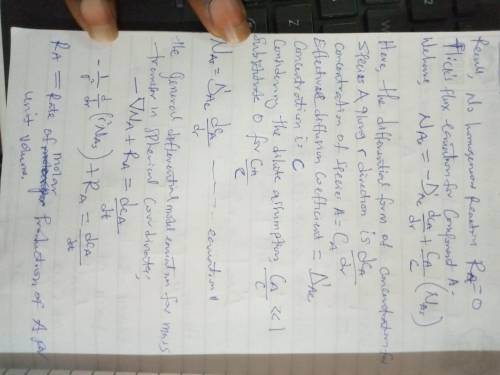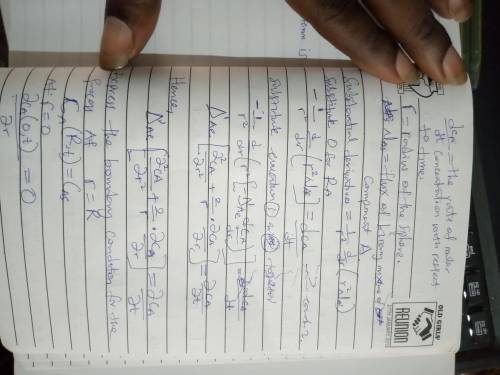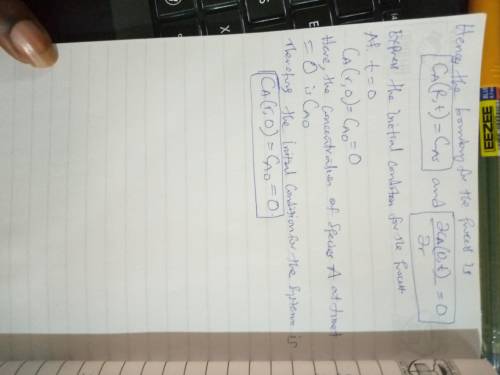
Engineering, 06.05.2020 03:07 Ully4559
Consider a single, porous, spherical, inert mineral particle. The pores inside the particle are filled with liquid water (species B). We are interested in analyzing the molecular diffusion of the contaminant benzene (species A) within the water- filled pores of the particle. Benzene is very sparingly soluble in water, and does not adsorb onto the intersurfaces of the pores. The process is isothermal at 298 K. The concentration of dissolved benzene in the water surrounding the particle is constant with time. Starting with the general differential equation for mass transfer, develop the differential equation to describe the concentration profile of benzene within the single, porous, spherical, inert mineral particle. The effective diffusion coefficient of benzene in the water-filled pores of the particle is represented by the term DAe. As part of the analysis, state all reasonable assumptions, as well as boundary/initial conditions for the process.

Answers: 2


Other questions on the subject: Engineering

Engineering, 03.07.2019 14:10, volleyballfun24
If the thermal strain developed in polyimide film during deposition is given as 0.0044. assume room temperature is kept at 17.3 c, and thermal coefficient of expansion for the film and the substrate are 54 x 10^-6c^-1 and 3.3 x 10^-6c^-1respectively. calculate the deposition temperature.
Answers: 3


Engineering, 04.07.2019 18:10, ashleybaber4966
If a particle moves along a path such that r : (3 sin t) m and ? : 2t rad, where t is in seconds. what is the particle's acceleration in m/s in 4 seconds? a)- 16.43 b)- 16.29 c)- 15.21 d)- 13.79
Answers: 1

Engineering, 04.07.2019 18:10, tjeffers90028
Refrigerant 134a enters an insulated compressor operating at steady state as saturated vapor at -26°c with a volumetric flow rate of 0.18 m3/s. refrigerant exits at 9 bar, 70°c. changes in kinetic and potential energy from inlet to exit can be ignored. determine the volumetric flow rate at the exit, in m3/s, and the compressor power, in kw.
Answers: 1
You know the right answer?
Consider a single, porous, spherical, inert mineral particle. The pores inside the particle are fill...
Questions in other subjects:



Mathematics, 14.07.2019 17:00





Mathematics, 14.07.2019 17:00

History, 14.07.2019 17:00






